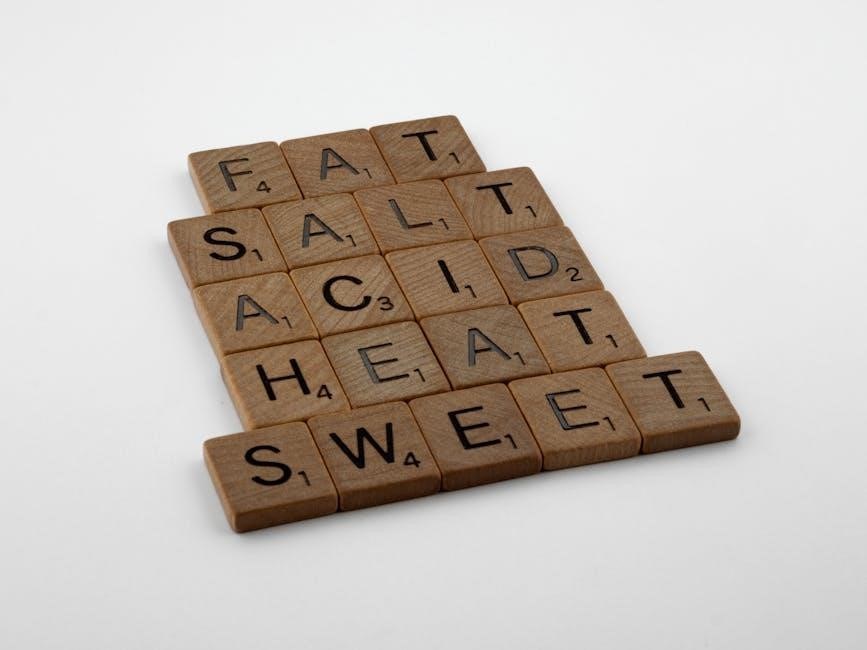Understanding the John Deere 7200 Planter
The John Deere 7200 planter is an agricultural implement designed for precision planting. It utilizes advanced seed metering technology to ensure accurate seed placement. It is built with a durable frame for long term use and can be adapted for various crops with different settings.
The John Deere 7200 planter is a vital piece of equipment for modern agriculture, known for its precision and adaptability. This planter is designed to accommodate various planting needs, ensuring accurate seed placement and spacing. It’s used for conservation tillage systems. The 7200 is able to withstand years of work, and helps in maximizing yield potential. Its adjustable settings make it a versatile tool for different crops and field conditions.

Importance of the Rate Chart
The rate chart is essential for achieving desired plant populations. It provides the necessary information to configure the planter for specific seed types and spacing requirements, ensuring optimal yields.
Why the Rate Chart is Essential for Successful Planting
The rate chart is crucial because it dictates the correct settings for consistent seed spacing. Without it, achieving the desired plant population per acre is nearly impossible. Proper spacing ensures adequate resources for each plant, like sunlight and nutrients. Using the chart helps maximize yield by preventing overcrowding or under-population, ultimately leading to a more efficient and productive planting process. This is vital for optimizing crop growth.
Key Components of the Rate Chart
The rate chart includes information about seed spacing, population, input sprockets, and disk types. It is essential for setting the planter correctly. Understanding each component is key for successful planting.
Understanding Seed Spacing and Population
Seed spacing refers to the distance between individual seeds within a row, while plant population is the number of plants per acre. The John Deere 7200 rate chart helps achieve the desired plant density for specific crops. Factors like row spacing influence the ideal population and how the seed chart is used, making it essential for optimal growth. The correct settings ensure adequate resources for each plant.
Input Sprocket and its Role in Seeding Rate
The input sprocket is a crucial component in adjusting the seeding rate on a John Deere 7200 planter. It works by controlling the speed at which the seed metering mechanism operates. Changing the input sprocket alters the number of seeds dispensed per row, directly impacting the plant population. The rate chart will specify the correct sprocket combination for a desired seeding rate, making it essential for accurate planting.
Different Disks for Various Seed Types (Corn, Soybean etc)
The John Deere 7200 planter uses different seed disks to accommodate various seed sizes and shapes, like corn and soybeans. These disks are designed with specific cell sizes and configurations to ensure consistent seed singulation and proper release. Using the correct disk for each seed type is critical for achieving the desired plant population and spacing. The rate chart will specify which disk is needed for different crops.
Factors Affecting Seeding Rate
Several factors influence the seeding rate, including seed size, planting speed, and the chosen planter settings. The rate chart must be consulted to adjust for these variables.
Impact of Seed Size on the Chart
Seed size significantly impacts the accuracy of the seeding rate. The rate chart provides recommendations tailored to different seed sizes, ensuring that the planter delivers the correct population. Larger seeds may require adjustments to the planter’s settings to achieve proper spacing; The chart helps to calculate correct settings for variable seed sizes for optimized planting.
Influence of Planting Speed on Seed Placement
Planting speed significantly affects seed placement and spacing accuracy. Higher speeds can lead to inconsistent seed drop and spacing, compromising the desired plant population. The rate chart is designed for optimal speeds; deviating from these speeds can impact accuracy. Therefore it is essential to maintain the correct speed as indicated in the chart to ensure even distribution and proper seed placement.
Practical Use of the Chart
The rate chart guides users in setting the correct planting rates. It helps calculate seed spacing based on chosen settings. It assists in adjusting the planter for different row spacing.
How to Calculate Seeding Rate Using the Chart
To calculate seeding rate using the chart, first locate your desired seed type and row spacing. Then identify the corresponding input sprocket and driven sprocket combinations on the chart. These combinations will indicate the approximate seed population per acre and the average seed spacing in inches. Refer to the chart to find the specific settings that match your requirements, ensuring accurate seed placement. The chart also shows approximate seed population per acre for different combinations.
Adjusting Settings for Different Row Spacing
Adjusting for different row spacing on the John Deere 7200 planter involves consulting the rate chart to find the appropriate sprocket settings for the desired seed population. The chart provides specific combinations for various row spacings, like 30 inches or 15 inches. Changing row spacing requires adjusting the planter’s transmission settings to achieve the correct seed spacing and population per acre. It is crucial to select the right sprocket combinations for each row spacing.
Maintenance and Accuracy
Regular meter inspections are essential for maintaining accuracy in seed placement. Proper seed release and spacing rely on consistent maintenance. Annual checks ensure optimal planter performance and prevent planting errors.
Importance of Regular Meter Inspections
Regular meter inspections are crucial for maintaining the accuracy of your John Deere 7200 planter. These inspections help ensure that the seed meters are functioning correctly, delivering the precise seed population and spacing as intended. Neglecting these checks can lead to inconsistent seed placement, affecting plant emergence and ultimately impacting crop yield. Annual inspections, ideally done by a John Deere dealer, are recommended to ensure optimal performance of the meters and to catch any potential issues early.
Ensuring Proper Seed Release and Spacing
Ensuring proper seed release and spacing is paramount for achieving optimal plant populations with the John Deere 7200. This involves checking that seed is consistently released from the seed disk without any delays or double drops. Factors like the condition of the disk and the presence of static can hinder proper seed release, impacting spacing accuracy. Using talc-treated seeds can help with consistent release. Always verify spacing with a field check, even after adjustments, to confirm the desired results are achieved.

Troubleshooting Common Issues
Common issues with the John Deere 7200 planter include static on plastic disks, which can cause poor seed release, and burrs in seed tubes, which can also affect spacing. Regular checks are crucial.
Addressing Issues with Static on Plastic Disks
When planting, especially at higher speeds such as 5 mph, static on plastic disks can cause seeds to stick, disrupting the desired spacing. If the plastic disk holds the seed for even a brief moment longer than intended, it can lead to poor seed placement. This issue is important to address by ensuring proper grounding of the planter and using talc-treated seeds to minimize static.
Checking for Burrs in Seed Tubes
Burrs in the seed tubes can significantly affect seed placement accuracy. These burrs, often caused by the disk openers rubbing against the bottom of the seed tube, can impede the smooth flow of seeds. It is crucial to regularly inspect the seed tubes for any such burrs and remove them. This ensures that seeds travel unimpeded, resulting in proper spacing and population when planting.

Additional Considerations
Several factors beyond the rate chart can influence planting success. Using talc on seeds can improve flow. Field checks are crucial for verifying the desired plant population after planting.
Using Talc for Consistent Seed Release
Applying talc to seeds is a crucial step for ensuring consistent and accurate seed release from the seed disk. Talc acts as a lubricant, preventing seeds from sticking to the disk, which is especially important when using plastic disks. This consistent release leads to more uniform seed spacing and population, ultimately contributing to better crop yields. The proper application of talc is essential for optimal planter performance.
The Need for Field Checks to Verify Population
While the rate chart provides a guide for setting the planter, it is crucial to conduct field checks to verify the actual seed population. Factors like seed size, planting speed, and even static on the disk can impact the final population. Field checks involve physically counting plants in a defined area to ensure that the planter is delivering the desired seed density. This verification step ensures optimal yield and minimizes potential losses.

Parts and Accessories
Various parts and accessories are available for the John Deere 7200 planter. These include seed discs, seed meters, seed tubes, gauge wheels, and marker disc blades, ensuring proper maintenance and operation;
Availability of Parts for John Deere 7200 Planters
Finding parts for the John Deere 7200 planter is generally straightforward, given its popularity and the vast network of John Deere dealerships. Numerous online retailers also offer a wide selection of components, from seed discs to complete meter assemblies. This wide availability ensures that farmers can quickly source the necessary parts to keep their planters in optimal working condition, minimizing downtime during crucial planting seasons.
Types of Planter Parts⁚ Seed Discs, Meters, Tubes, etc.
The John Deere 7200 planter utilizes a variety of parts, including seed discs designed for different seed types, precise seed meters to control seed flow, and seed tubes that guide seeds to the furrow. Other essential parts include gauge wheels for depth control, marker disc blades, and parallel linkage components. These components work in synergy to ensure accurate seed placement and consistent planting depth, affecting overall planting success.
Advanced Technologies
Modern John Deere 7200 planters can integrate precision technologies like the vSet meter for enhanced seed singulation. The ExactShot system can be used for precise seed placement and fertilizer application, further improving planting accuracy.
Integration of Precision Planting vSet Meter
The integration of the Precision Planting vSet meter with the John Deere 7200 planter significantly enhances its seed metering capabilities. This advanced technology ensures more accurate seed singulation and spacing compared to older systems. The vSet meter contributes to a more consistent plant population, which is crucial for maximizing yield. This upgrade is particularly beneficial for farmers looking to improve planting precision and efficiency with their existing 7200 planters.
Use of ExactShot System for Seed Placement
The ExactShot system is an advanced technology designed to enhance seed placement precision with the John Deere 7200 planter. This system applies a small, precise dose of liquid fertilizer directly onto the seed during the planting process. By placing the fertilizer accurately, ExactShot aims to improve early plant growth and development. This precise application method can lead to increased efficiency in fertilizer use and potentially higher yields compared to traditional methods.
Using the correct settings on the John Deere 7200 planter, in conjunction with the rate chart, is essential for maximizing yield potential. Proper maintenance and field checks are also key.
Maximizing Yield Potential with the Correct Settings
Achieving optimal yields with the John Deere 7200 planter hinges on utilizing correct settings guided by the rate chart. Understanding the interplay between seed size, row spacing, and desired plant population is critical. Precise seed placement and consistent spacing, facilitated by accurate rate chart application, ensure each plant has adequate space and resources, thereby maximizing yield potential. Regular field checks are needed to verify population.

